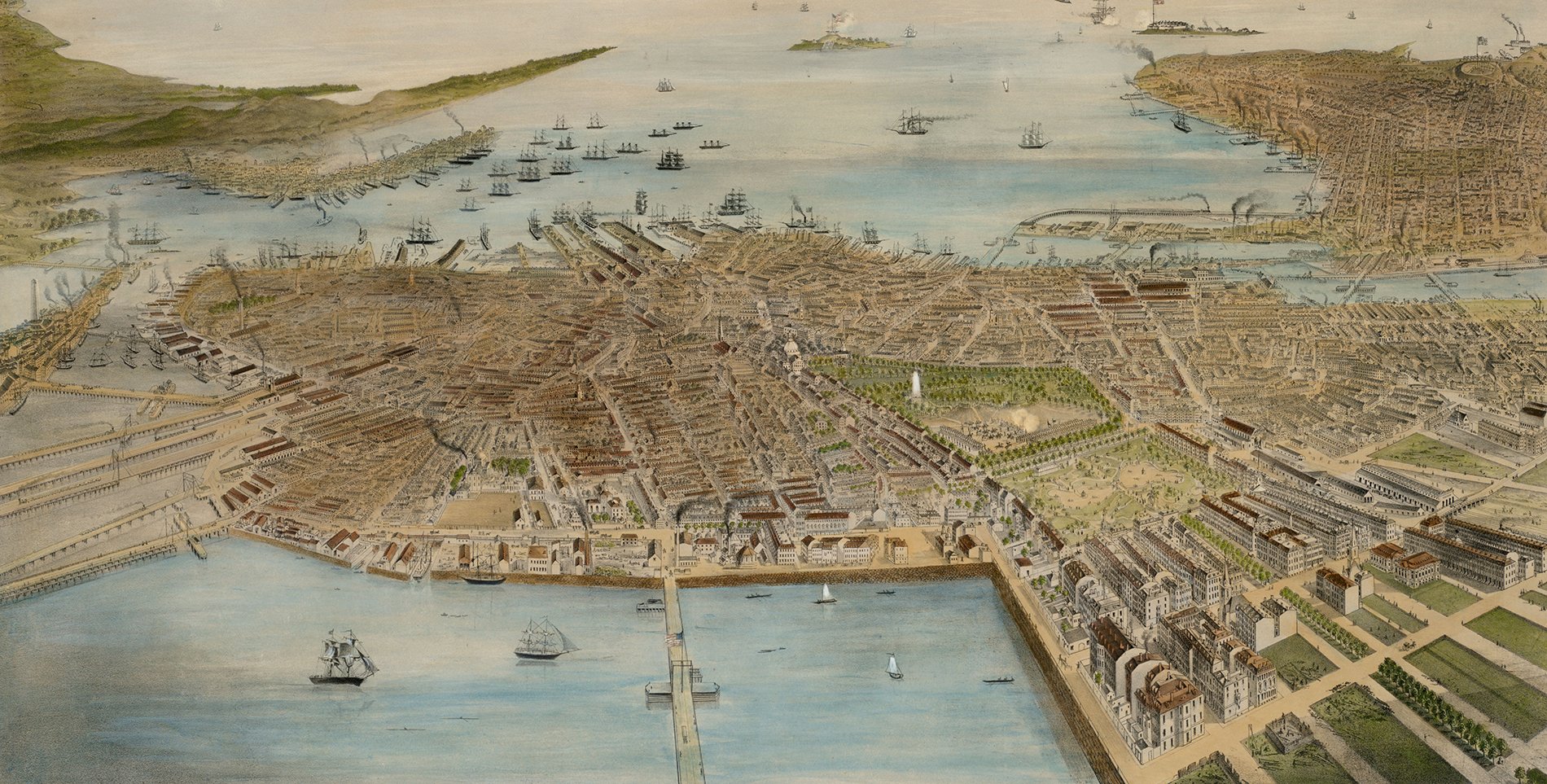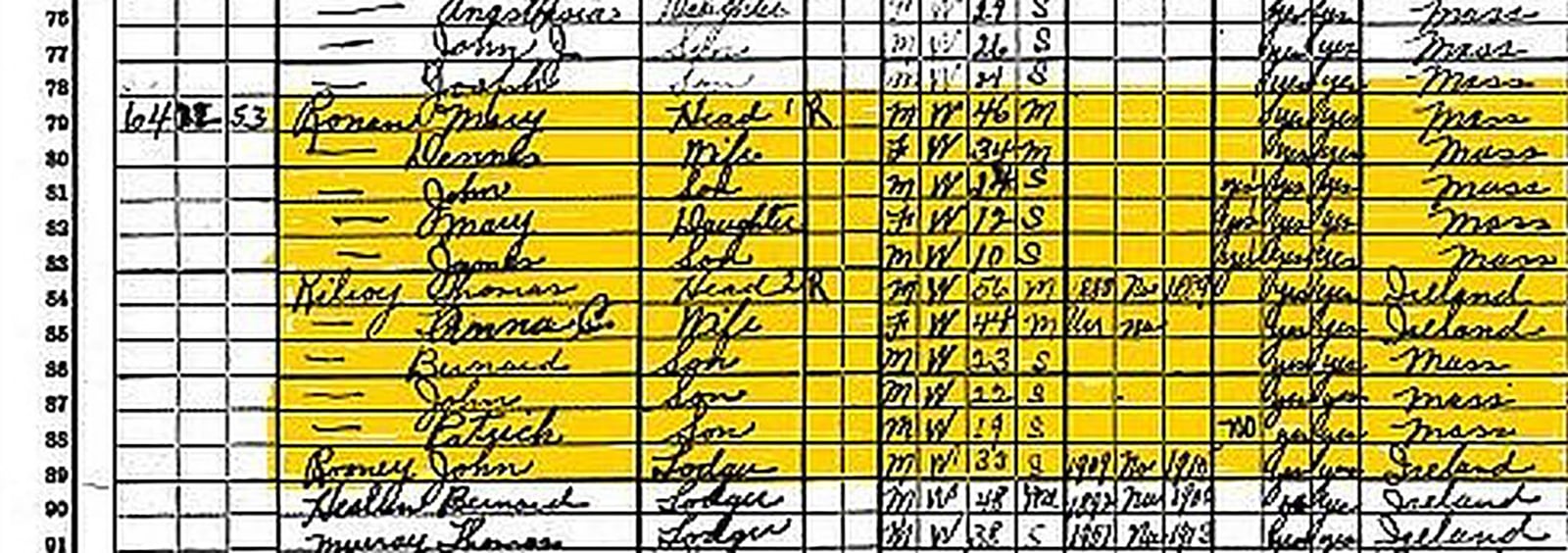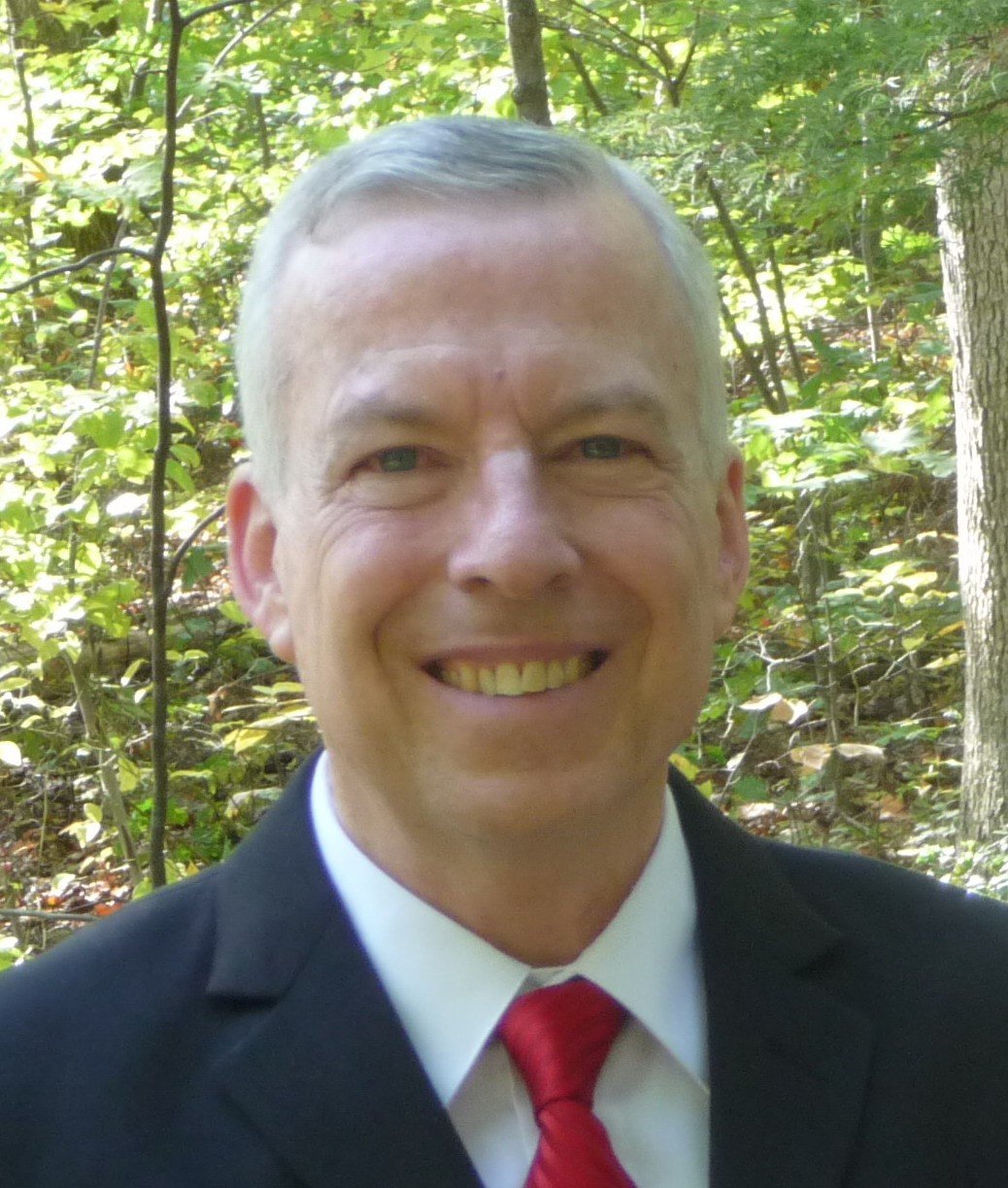
Map of Boston in 1870. Via Wikimedia Commons.
Over the last couple of years I’ve been researching the lives and descendants of Irish immigrant Bostonians Edward J. Costello (1866-1926 [?]) and Mary Josephine Maloney (c. 1872-1943). This genealogical journey has taken me on a number of interesting side trips, one of which I recounted last year in two posts about identifying lodgers versus relatives. Another, more tortuous trip, was occasioned by census records with glaring inconsistencies about the Rooney and Kilroy families. Patient digging has finally revealed the truth about these families and their interrelationships.
Edward and Mary Costello had six children who survived to adulthood. Their daughter Anne Marie “Annie” Costello (1895-1988) married Robert Joseph D. Jones (1894-1968) in 1914, and the couple had three children: Robert Joseph “Bobby” Jr. (1915-1987), Marjorie Anne (1920-1935), and Helen Marie (1924-1998). In 1940, Bobby married Catherine “Peggy” Rooney (1920-2016), daughter of Irish immigrants Hubert/Hugh J. Rooney (1880-1932) and Ellen J. “Nellie” (McCabe) Rooney (1882-1927). Hubert/Hugh’s parents were Hubert/Hugh Rooney and Bridget Kilroy, who wed in 1867 in the Roman Catholic Chapel of Taghmaconnell, Taghmaconnell Civil Parish, Co. Roscommon. Ellen was born in Dunlo, Kilcloony Civil Parish, Co. Galway, to John McCabe and Bridget Grady, who married in 1870.
Hubert Rooney married Ellen McCabe in Boston in 1908. In the April 1910 census, Hubert (29), Nellie (26), their 15-month old son James, and Hubert’s younger brother John J. Rooney (23) were recorded living at 75 Phillips Street. Hubert was working as a teamster in a brewery. John had immigrated in 1909, and like Hubert six years earlier, his older brother Michael of Malden paid for his passage to Boston. In the January 1920 census, John Rooney—now 33 and a teamster for an express company—was recorded among several lodgers living with the extended family of Irish immigrants Thomas Kilroy (56), his wife Anna C. (44), and their three Massachusetts-born sons Bernard (23), John (22), and Patrick (19), at 64 Dudley Street in Roxbury. They were enumerated with another family headed by Mary and Denis Ronan (genders mistakenly reversed!) and their three children John (14), Mary (12) and James (10), all of whom were listed as Massachusetts natives. Naturally, I was curious to find out whether John Rooney, whose mother’s maiden name was Kilroy, was related to Thomas or Anna C. Kilroy, or to Denis or Mary Ronan. These inquiries opened a Pandora’s Box!

Section of the 1920 U.S. Federal Census showing the Ronan family
My initial research into the Kilroys and Ronans, based on the relationships and approximate ages recorded in the 1920 census, was fruitless. I did not find a civil marriage record between 1875 and 1885 anywhere in Ireland for reportedly Irish natives Thomas Kilroy and spouse Anna, nor did I find a U.S. marriage record for them—nor was this Kilroy family found in the 1900 or 1910 censuses in Massachusetts! Boston city directories from 1920 to 1931 variously list Thomas, Patrick, and John Kilroy at 64 Dudley Street, as well as John Rooney in 1920-1921. However, the June 1930 census listed Anna C. Killroy (now only 27, versus 44 in 1920), Bernard G. (25 vs. 23), and John M. (23 vs. 22) as the unmarried children of Dennis Ronan (50) and wife Mary (55)—both born in Ireland, not Massachusetts as stated in the 1910 census. Dennis was a laborer in a stove factory, Mary managed a boarding house, Anna was a boarding house maid, and her brothers Bernard and John were students. Four lodgers lived with them, so presumably their residence was the boarding house. Obviously, these multiple name, age, and nativity discrepancies between the 1920 and 1930 census records needed to be sorted out! To do that, I had to go both wider and deeper with my search.

Section of the 1930 U.S. Federal Census showing the Ronan family
It took a while, but eventually I figured out why census records for the Thomas Kilroy and Denis Ronan families were so inconsistent, and how John Rooney was related to them through his mother Bridget Kilroy. Going back in time, I found—thanks to Boston birth and baptism records on American Ancestors—that Irish immigrants Patrick J. Kilroy (1867-1908) and Mary Agnes Tully (1868-1942) married in Boston in 1898. Patrick, son of Patrick Kilroy and Anne Keogh (who wed in 1864), was born in Racepark, Athlone Union, Co. Roscommon. Mary, daughter of Thomas Tully and Mary McCormick/McCormack, was born in Castleffrench, Killosolan Civil Parish, Co. Galway. Patrick and Mary Kilroy had five children over the next nine years. Their first child, Mary, was born and quickly died in June 1899. However, in the June 1900 census the couple reported no children born or deceased, and Mary’s sister Katherine (listed as 20 years old, though she was almost 23) was recorded living with them. Their next children were Anna Catherine (1900-1952), Thomas Patrick (1903-1976), Bernard Joseph (1905-1955), and John M. (1907-1968). A year later, on 15 August 1908, Patrick died of pneumonia at age 39, leaving Mary and their four children without support. Mary opened a boarding house which accommodated ten boarders, taking advantage of the demand for housing from Boston’s immigrant community. In the April 1910 census, widowed Mary and her four surviving children were recorded living at 33 Linden Park Street. Mary’s Ireland-born sister Elizabeth N. Tully (listed as 22, actually 25) lived with them and worked as a servant in the boarding house.
The reasons behind some of the Kilroy-Ronan census inconsistencies became obvious when I discovered a marriage record dated 27 November 1917 for widowed Mary A. (Tully) Kilroy and Irish immigrant stone-cutter Dennis J. Ronan. Their ages were recorded as 40 and 31 respectively, but Mary was actually 49, and Denis 34. Both were living at 64 Dudley Street—perhaps they met when Denis boarded there? Denis, the son of James Ronan and Margaret Burke, was born on 26 November 1883 in Barnaderg, Killererin Civil Parish, in eastern Co. Galway. He immigrated to Philadelphia in 1906, and his brother John paid for his passage. By 1910 or earlier, he had moved to Boston and was working as a stone-cutter. In June 1917, when he registered for the World War I draft, he was working for Troy Brothers & Co. marble works at 975 Massachusetts Avenue, Roxbury.
It became clear that the 1920 and 1930 censuses reflected Mary’s second marriage to Denis Ronan. What remains unexplained are the many baffling errors in the names, ages, and birthplaces of this couple and those enumerated with them. In 1920, Denis and Mary Ronan were listed with their genders reversed, with three children—John (14), Mary (12), and James (10). John’s age is close to his correct age of 12, but I found no records of a Mary or James Kilroy to match the other two. Nor was I able to identify 56-year-old Thomas Kilroy, who was recorded incorrectly as the husband of Anna C. As noted above, Denis and Mary (Tully) (Kilroy) Ronan were born in Ireland, not Massachusetts, and their four children were born in Boston, but Anna’s birthplace was listed as Ireland. Moreover, the ages of all four children were much younger than shown. One can only wonder who served as the informant for census taker Henry F. McGrady, and how they made so many errors!
The Ronan-Kilroy family was rendered more accurately in the 1930 census. Denis is listed as head of family, with his wife Mary and three of the Kilroy children. All birthplaces listed are correct, but their ages are not. Denis was 46, not 50; Mary was 62, not 55; Anna C. was 29, not 27; John M. was 22, not 23; and Bernard G. was correctly shown as 25, but his middle name was listed as Joseph. Their fourth child, Thomas Patrick, had married Rose Irene Kodad in 1928 and had a one-year old son. Denis died in 1938, and Mary in 1942.
Having partially sorted this out, I still had to determine whether there was a kinship connection between John J. Rooney’s mother Bridget Kilroy, and the Kilroy-Ronan family with whom John lived in 1920. I recalled that Bridget’s father was James Kilroy, and that when she married Hugh Rooney in 1867, she was living in Racepark, Athlone Union, Co. Roscommon—and that the Rooneys lived in Pollalaher, also in Athlone Union. I searched Irish civil registration records for all Kilroy births between 1864 and 1880 in Athlone Union, and voilà! Patrick J. Kilroy, who married Mary Agnes Tully in Boston in 1898, was also born in Racepark! I also found birth records for four of his siblings: Catherine, born 20 November 1864; Mary, born 5 July 1869; Michael, born 4 February 1872; and Bridget, born 4 October 1874.
Additional findings point to a likely relationship between the Rooneys and the Kilroys in Racepark. A James Kilroy died in Racepark on 15 October 1908 at age 95; his son Michael reported his death to the registrar. This James, born c. 1813, could be Bridget’s father, since she was born in the 1840s. The only James Kilroy in Ireland’s 1901 census who might match this James was listed as age 82 with wife Mary (60), unmarried son Michael (40), and 14-year old grandson Hubert Rooney in the townland of Corralee & Ballygatta, Taughmaconnel Civil Parish, the same area as Racepark. I could not find a civil birth record for Hubert, and online Catholic parish baptism registers for Taughaconnell end in 1881.
While unfortunately, I don’t have all the pieces of this puzzle, the multiple pieces I do have are consistent. I should note that Racepark is a tiny place, not even a recognized townland. In 1901 there were only 19 houses containing 101 people in Corralee & Ballygatta. It is highly probable that the Kilroys and Rooneys knew each other and intermarried.
Further Learning
Free Video Lecture: Using the U.S. Federal Census
The U.S. Federal Census is often the go-to resource for family historians researching ancestors from the 19th and 20th centuries. When using this resource, it’s important to understand its context, strengths, and shortcomings. In this lecture, Director of Research Services Lindsay Fulton gives an overview of the Federal Census and offers valuable search techniques for using this important resource.
Portable Genealogist: Using the Federal Census: 1850-1950
The 1850 census marks the first time every person in the household was enumerated by name. It also recorded immigration details, education, income, and ethnicity, providing researchers with in-depth information about ancestors. Designed to fit easily in your research binder, this four-page laminated guide provides key information which will help you get the most out of this resource.
Share this:

About Joe Smaldone
Joe Smaldone and his wife Judy Warwick Smaldone have been researching their family’s history for more than 20 years. Their research has taken them to many national, state, and local libraries, archives, court houses, churches, cemeteries, historical and genealogical societies, and other research sites across the United States, and abroad to Ireland, Italy, and Sweden. They are members of NEHGS and the New York Genealogical and Biographical Society. Joe was an adjunct professor at Georgetown University, where he created and taught a course entitled Your Family in History. He is a Genealogy Research Consultant at the FamilySearch Center, Annapolis, Maryland, and has published numerous genealogical studies, articles, abstracts, blog posts, and indexes.View all posts by Joe Smaldone →